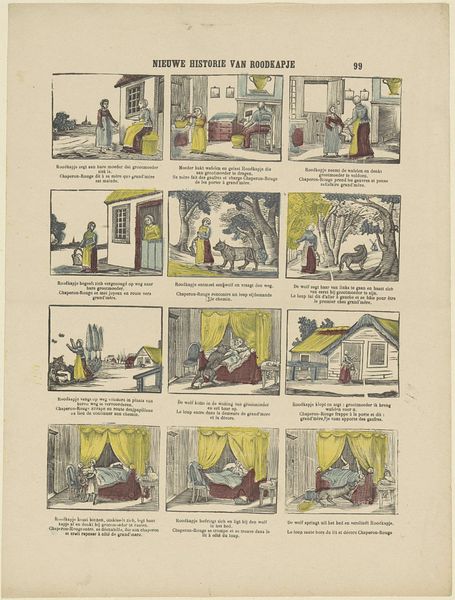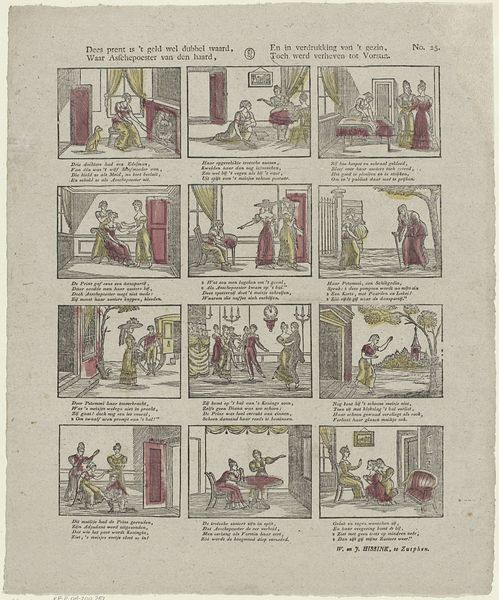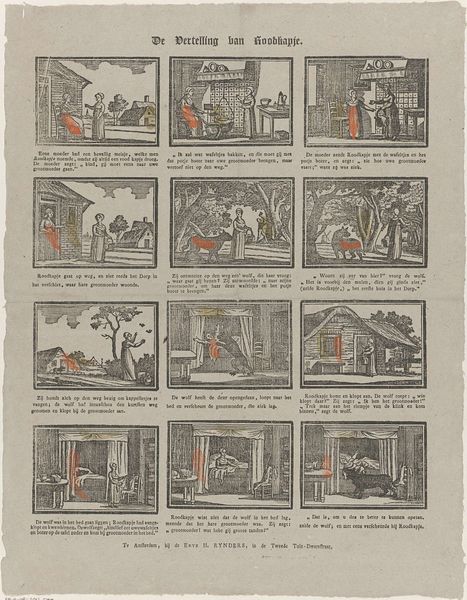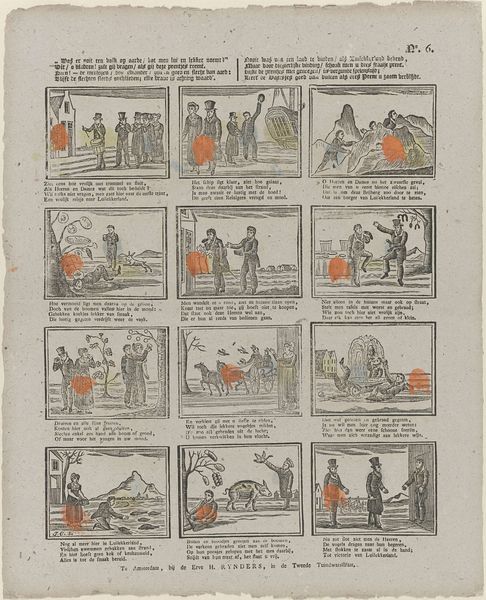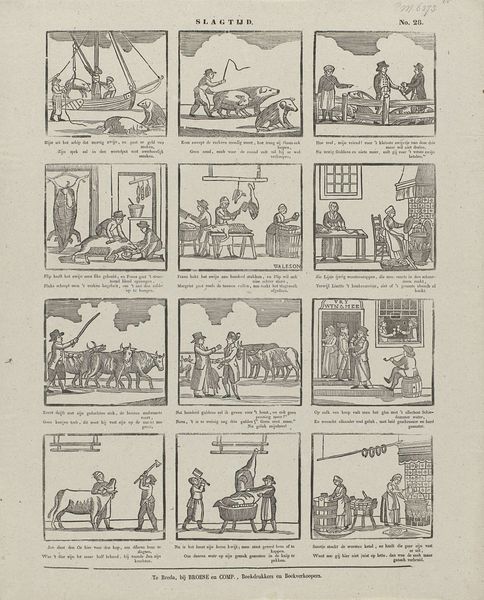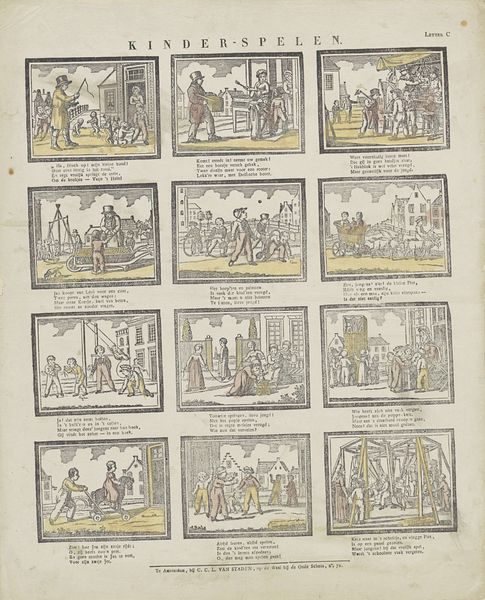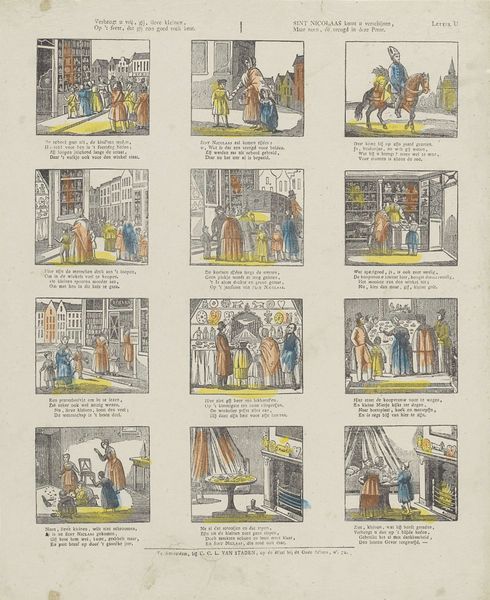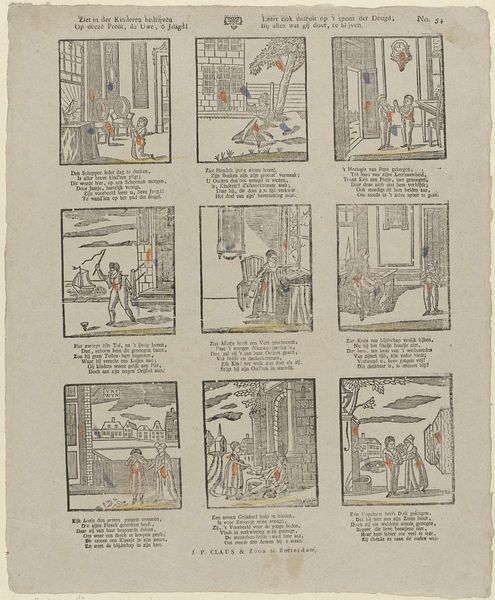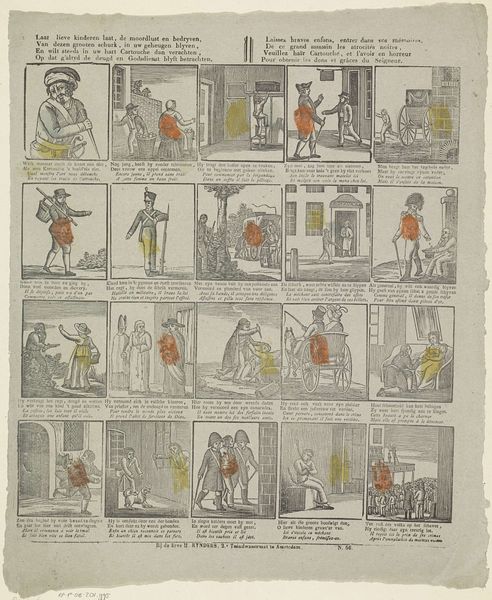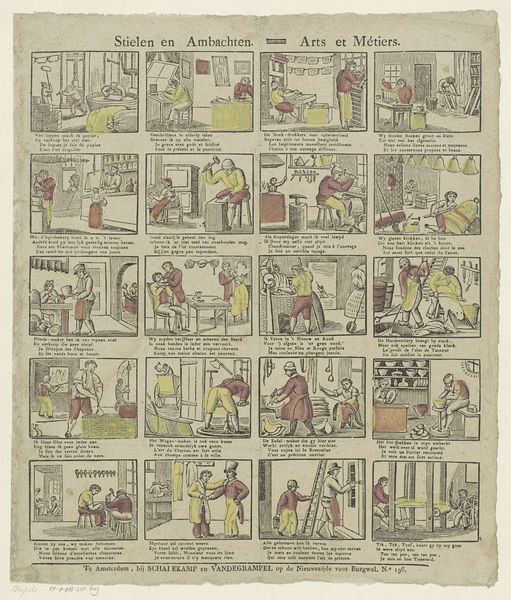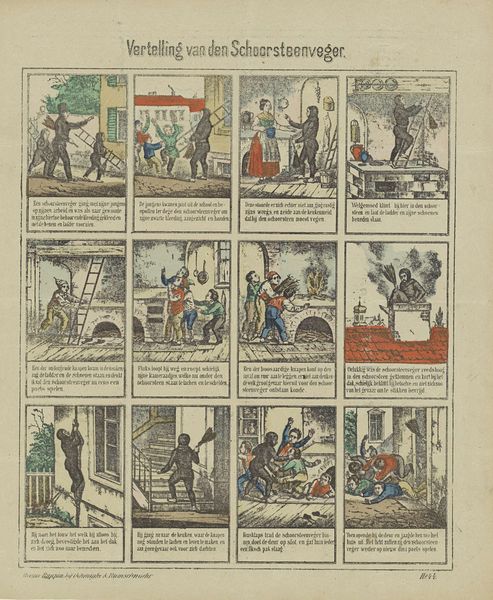
#
comic strip sketch
#
narrative-art
#
comic strip
# print
#
comic
#
genre-painting
Dimensions: height 370 mm, width 315 mm
Copyright: Rijks Museum: Open Domain
Editor: Here we have Gerrit Oortman's print "De vertelling van Klein Duimpje met den wildeman," created sometime between 1831 and 1854. It's reminiscent of a comic strip, depicting scenes from the tale of Tom Thumb, and has this captivating old storybook mood to it. How do you approach a piece like this? What stands out to you? Curator: The most striking formal quality is its ordered, gridded composition, a series of vignettes contained within strict rectangular borders. The artist uses this rigid structure to narrate Thumb's story in discrete units, effectively controlling the reading experience. Consider the stark contrast between the linear confines and the chaotic events depicted within each frame: the abandonment in the woods, the ogre's house, the narrow escapes. It’s almost as if the imposed order aims to subdue the unsettling nature of the narrative. Editor: That's a great point! So you see the grid not just as a way to tell the story, but also as a key element shaping how we experience the story's drama? Curator: Precisely. Look, too, at the palette: muted colors applied sparingly. It enhances the print's overall sense of detachment. The lack of vibrant hues could suggest an emotional distance from the depicted events, pushing us to analyze rather than merely empathize with the characters. The artist isn't encouraging sentimental engagement. We are asked to consider narrative function, spatial design, and controlled emotive suggestion. Editor: That is fascinating! The restricted palette as a choice that does not draw in the emotions of the viewers but appeals to rational understanding. I never looked at it like that. Thank you! Curator: My pleasure. It reveals how formalism can unlock new perspectives, by emphasizing an artist's visual problem-solving.
Comments
No comments
Be the first to comment and join the conversation on the ultimate creative platform.

